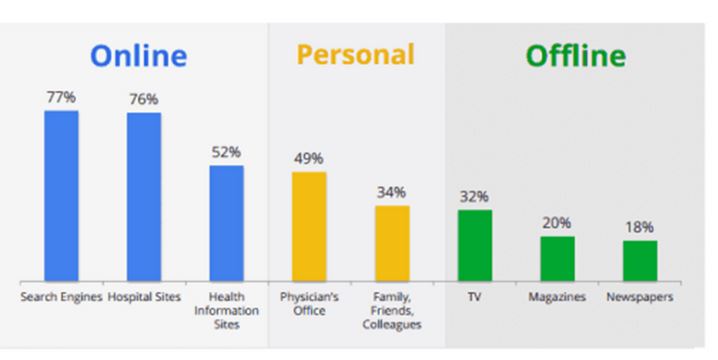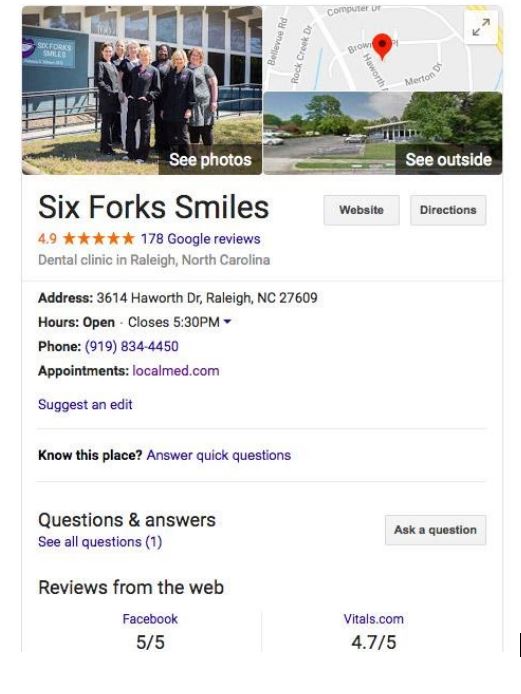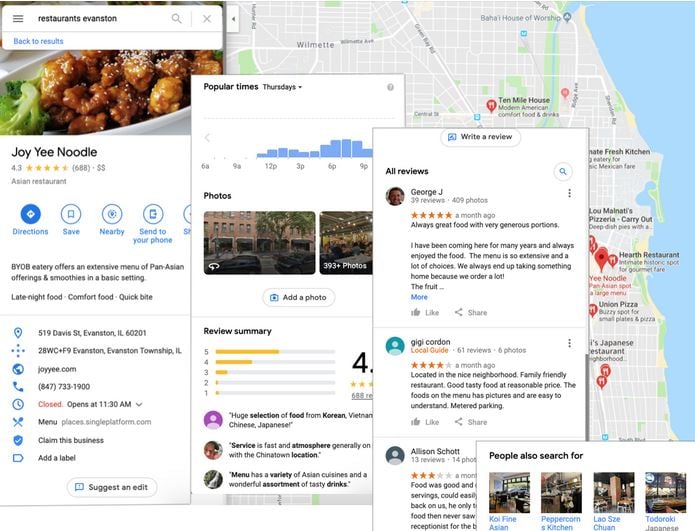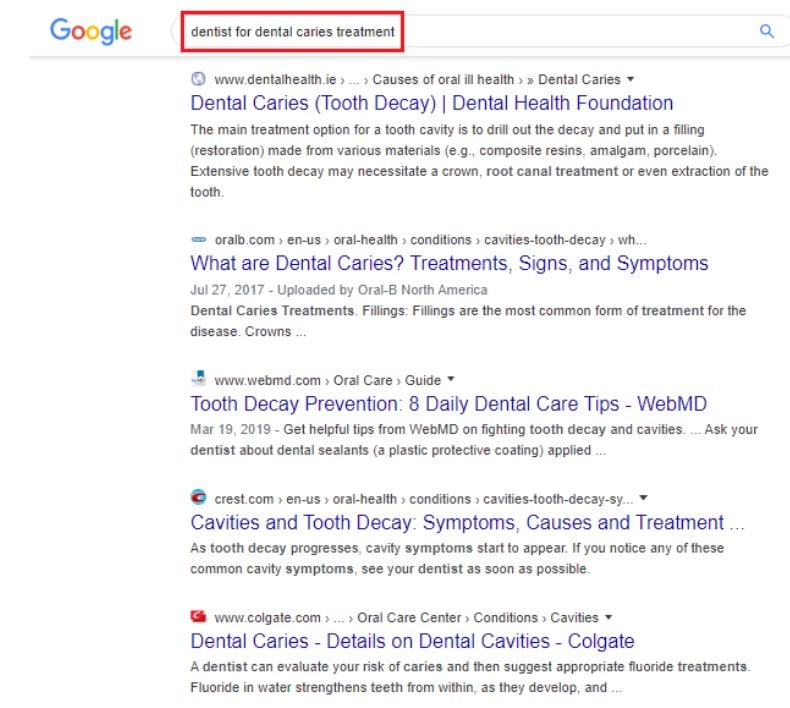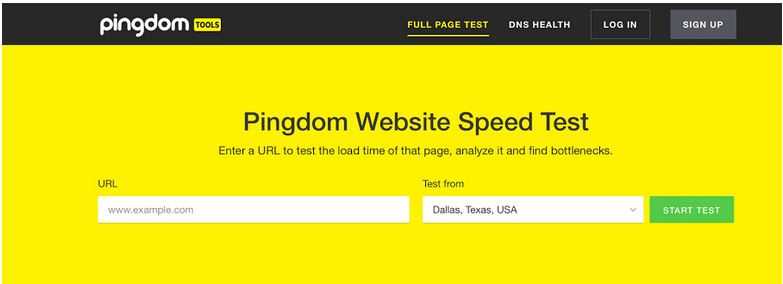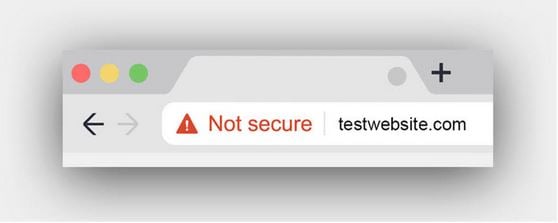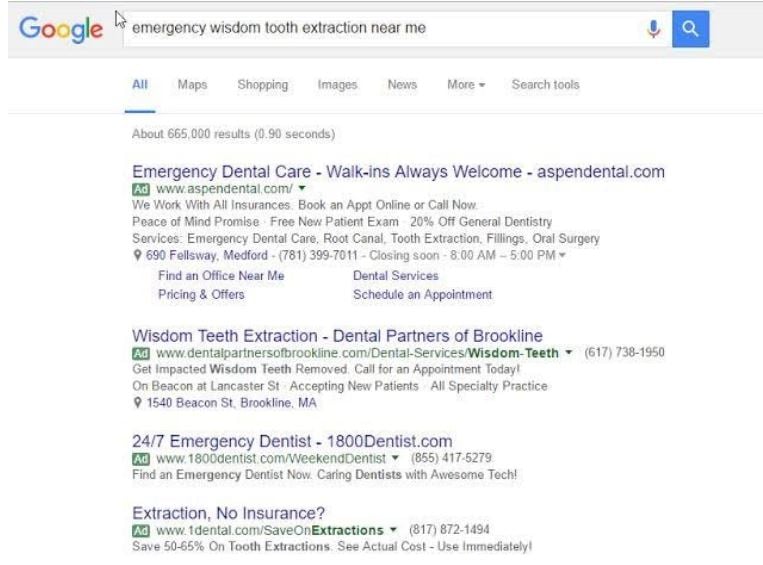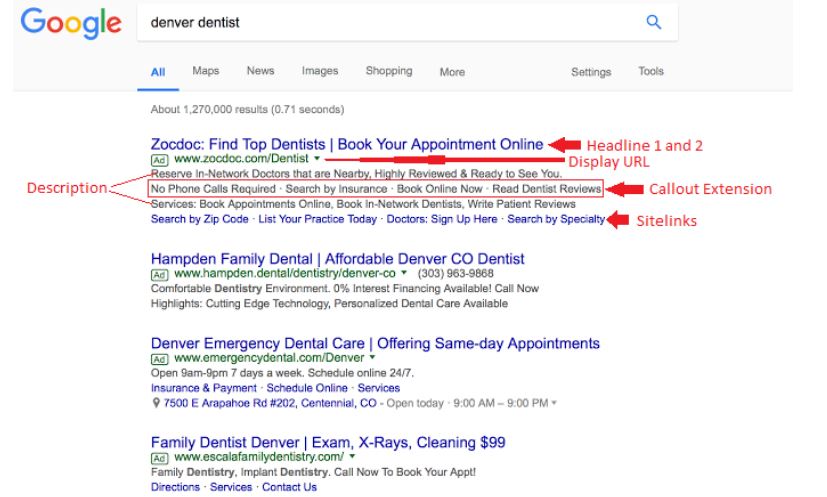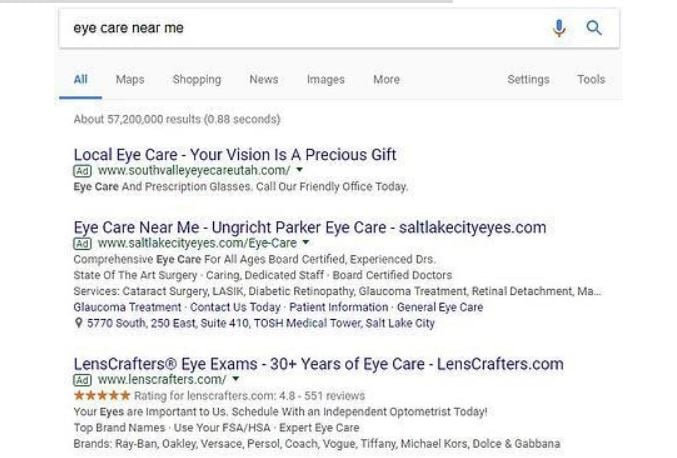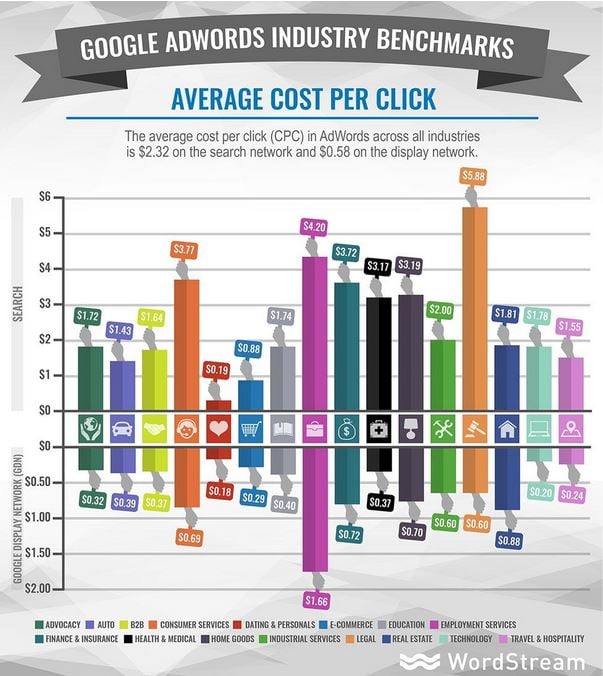Are you a dentist or dental marketing professional seeking ways to grow your practice by attracting patients from Google? Then read on.
For any business to experience appreciable growth, good marketing is essential and the dental practice is no exception to this rule. The essence of good marketing is to attract new patients.
Yes! Any business in existence needs them – “new clients.”
They’re the necessity of your dental practice, and to grow your business, you need a steady supply of patients monthly and yearly.
The Morrisville Dentist increased organic traffic by 320% in 9 months and acquired 4X more patients from free Google traffic.
In fact, any dentist that wants to grow his or her practice needs to receive nothing less than 20 new patients monthly, according to Dental Benchmarks. We believe this is an achievable goal for any dentist.
However, maintaining your current “customer” base and attracting new ones is not always an easy task and usually requires lots of effort, time, and financial investment.
Sometimes, you may need to offer high-quality dental services at cheap prices to get your patients happy and ready to spread the word to new patients.
But as the patients’ market continues to evolve, so too are the ways that dental practices reach out to acquire new patients. Other than search engines, some major channels for reaching out to new patients include:
- Website
- Directory listings
- Events
- Offline ads
- Online ads
- Social media
However, the best overall channel for reaching and attracting new patients is Google.
Here are just a few reasons why Google makes the best channel:
- Google is our trusted friend. A larger percentage of patients trust Google, so finding your practice on Google gives you an automatic competitive advantage.
- Google enables your potential clients to engage with your practice directly from search results.
- There are multiple ways patients can discover your business on Google – search results, Google Ads, Google Business Listing, Maps, Images, etc.)
- Google accounts for more than 70% of the total search market share and about 85% of mobile traffic. This makes Google the most popular and preferred search engine in the world followed by Bing.
- Google receives over 6.8 Billion searches daily and about 2.5 trillion searches yearly. Therefore, Google makes a very good avenue to attract patients. If your dental practice is not found on Google yet, you don’t exist.
- To date, Google search remains where most buying journeys start – either products or services. More so, Google search can deliver a sustainable and scalable source of free traffic to your business.
So being on Google’s first search result pages either through paid ads or effective SEO practices to attract patients is essential for your dental business.
If you’re not leveraging Google to attract new patients yet, your sales funnel may feel a little light.
However, you need not worry as this practical guide will lead you into how to attract patients from Google to your dental practice and acquire them.
This guide also contains some other important strategies to keep your new patient base growing.
Before you can attract patients to your practice from Google, your practice must first be found by patients on Google, which means you have to ensure that you’re getting seen on Google.
So, the first question is, “how can you be found by patients on Google?”
Practical Steps To Get Seen by More Patients on Google:
Let’s examine some of the practical steps that can help you to position your dental practice’ website on Google’s top organic pages:
#1: Set Up a “Google My Business” Account
Google has made it easier than ever for patients to discover, assess, and engage with dental practices directly from Search results and Maps, even without having to click through to a website and this is through Google My Business.
So, if you want your business to be found by new patients on Google, you need to create a Google My Business account.
Some industry experts revealed that the Google search engine prefers businesses with an optimized Google My Business page.
Six Forks Smile, for example, is a dental practice that’s listed on Google My Business.
With Google My Business, you can update your contact information, website, social media links, business’s location, directions and map, hours of operation, etc. You can even add a logo and photos.
Google My Business offers one of the free ways to advertise on Google.
Since your prospects want to know as much as possible about your dental practice before becoming a customer, why don’t you tell them what they want to know?
Fill out as much information on your Google My Business profile as you can. The more fields you fill out, the more information Google can present to patients in search results.
More so, the more complete your profile is, the higher your page will be ranked in results and everybody wants to choose the top option or become a customer of the business in top positions.
As regards your description, make is concise but engaging and catchy enough to attract customers.
For instance, your description should tell about your business to prospects, the output to expect, and what differentiates your practice from others.
Once you’ve set up your Google My Business page, a box containing your listing would always come up on the right-hand side of the Google search results pages.
Since Google My Business page also contains customer reviews, it is a good way to tell new patients about how well you’ve served old patients and what they should expect of your dental service.
If you set up a Google My Business page, then you automatically have your Google Map set up as well.
Here is a picture of the information a new patient can gather about your dental practice just from Google Maps results:
Therefore, even without a website, Google My Business page is a powerful yet free channel of showcasing your business and everything about it to patients online.
#2: Prepare Your Business Website
This step is very important and comes before any other step because aside from setting up the Google My Business page, every other channel to attract patients from Google involves using your business website.
In fact, your business website is also a means by which new customers can find your business on Google. Basically, your website should guide visitors to become your customers.
It is needless to ask if you have a website because it is expected of every wise and smart dentist to have an online presence. But the question is, “how well prepared is your business website?”
You must ensure that your business website is adequately prepared to accept new patients from Google and quickly provide them with the information they’re looking for.
If you don’t have a business website or if your business website is not prepared, while Google My Business may lead patients to your physical location, all of your other strategies to attract patients from Google may not generate any significant result.
#3: Produce Useful Content
What makes your dental practice website the go-to resource in your industry is its content. The content on your website tell what your website is all about, the type of audience it targets, and also attracts clients to your business.
Google will display your website to attract prospective patients based on the content it contains.
Therefore, you must always publish useful and relevant content on specific topics related to dental practices.
In getting started, you must identify your ideal patients – the target audience you want to reach out to through Google. This is a very important step that many dentists skip.
Knowing your ideal patients will help you to understand and decide the best content to publish on your websites. You will also be able to tailor your web content based on your target audience.
Are you targeting children, young people, or older people? Chances are that your dental practice online marketing strategy focuses on patient factors like age, gender, income bracket, lifestyle habits, geographical area, or a combination of these.
When you eventually identify your ideal patients, you’ll be able to write content that relates to their dental care problems that you’ll solve for them.
This will help you to better attract quality patients who will turn your dental practice into the right kind of business you’ve always wished for.
The next step involves determining and curating the dental topics that matter to your ideal patients. Make research and gather firsthand information that will give you insights necessary to effectively serve your ideal patients with the right content.
#4: Optimize Your Content
The only way your content can attract patients from Google is by optimizing it.
Yes! To get Google to present your website or web pages to more patients, you must optimize your web content.
This is done by structuring your content and strategically including relevant keywords or search terms you’re trying to show up for in Google search results in the following places of your web page:
- Title
- Meta Description
- Body
- Image tags
- URL
Google will use keywords and search terms to verify that your content offers patients are searching for and when Google finds these keywords, it considers your webpage a better fit and prefers your content above others.
In case you don’t know or not familiar with keywords, keywords are short targeted words or phrases that patients type into the Google search engine when looking for a dentist or dental service.
The act of optimizing your website for Google is called SEO (Search Engine Optimization). SEO helps you to achieve greater searchability and visibility on Google for new patients.
Take the following steps to optimize your content:
i). Search for and list out the top and relevant keywords or search phrases: From step 3 above, you would have identified your ideal patients.
Based on that, you can either create dental-related keywords that your ideal patients are most likely to search for in Google search engine to find a dentist that can help them or you can use some specified tool to determine the most popular and high-ranking keyword phrases your patients may be using to find dentists or dental care providers.
ii). Create blog posts and web content using the results of your keyword research: Make sure that you focus on only one major keyword per post and include your keyword in the title of the posts, the post’s URL, Meta descriptions, Meta tags, Snippets, H1 and other headers, the first paragraph of the post, the last paragraph of the post, and about 4 to 6 times in the body of the content.
iii). Keep your content interesting and engaging: As a dentist seeking to attract patients, don’t publish content that looks like a training manual or guide, your patients will get pissed off. Instead make your content concise, relevant, engaging, and interesting.
iv). Include some kind of visual: Like the popular saying, “a picture is worth 1000 words,” including visuals in your content goes a long way in attracting and engaging your patients. Include visuals relating to the content title or dental treatment.
Remember to add “Alt” tags and title attributes to your visuals. This will help you to get ahead of your competition.
v). Include actionable Calls-to-Action (CTAs): In our content or posts, invite patients to take action that requires a click. Clicks are measurable behaviors that show patients are interested in and engaging with your practice.
vii). Add internal links and external links to your content: Google looks into your content to see if it contains a fair amount of links to other pages on your website (internal links) and links to pages on other websites (external links).
Make sure that these links link to pages that are relevant to your content.
Be consistent with your post. To keep patients and Google paying attention to your content, it’s better to be consistent with your post – either once per month or once per week.
This is better than posting eight times in one month and not posting at all the following month.
Include frequently asked questions (FAQs) or questions and answers (Q/As) sections about dental treatment options in your content.
In a nutshell, to rise to the top of Google and attract patients, make sure that your content is user-friendly, trustworthy, unique, strategically fitted with top-rated and relevant keywords, concise but long enough to cover the topic being discussed as completely as possible, provide answers to the questions your new patients may have, and should contain clear CTAs.
For your information, Google knows when you’re just fumbling with careless content or keyword stuffing!
Other steps to optimize your webpages include:
a). Speeding up your site. If your website loads so slowly, aside from the fact that your web pages would have a hard time making it to the top of Google SERPs, your visitors will get frustrated, leave, and never return.
You can check your website’s speed using tools like Pingdom’s website speed.
b). Going mobile. If you don’t have a mobile-responsive dental website, you may be losing a lot of potential patients using mobile devices.
You know why? Mobile device users accounted for about half of all page views worldwide. So make sure that your website is optimized for the mobile experience.
This is more than just ensuring that your website is responsive. It must also be adaptive.
For instance, patients should be able to easily navigate with their thumb on the screen, phone numbers should be hyperlinked and launch into call mode once clicked, email addresses should launch into email apps once tapped.
c). Secure your website. As a dentist, your audience needs to feel secure on your website. If your website’s URL doesn’t start with “https”, Google doesn’t consider your website as being secure.
In fact, some web browsers will actually warn your audience that your website is not secure – imagine visitors to your website receiving a big scary red warning on their browsers because your website is not secure.
That’s a red alert and they will run for their lives. Soon, no one may visit your website and you would have no patients to attract.
These are most and primary of the SEO tactics you’ll need to perform on your website to optimize your content and web pages to rank well for your target keywords when trying to attract more patients from Google to your dental practice.
#5: Set up Your Google Ads Account
Another potent and faster way by which dentists can attract patients from Google to their website is by using Google Ads.
Google Ads will help you get information about your dental practice into one of the top slots of the search results but for a price. With Google ads, dentists would purchase placements on Google to highlight their practice.
Although Google Ads is a paid means of attracting patients, dentists have the opportunity to customize the strategy to fit their budget – either pay per click or pay per impression.
The first step involves registering for a Google Ads account. Visit the Google Ads homepage and click “Start Now” to set up your account. The process would be easier if you had already launched a Google My Business page.
You don’t need to worry about the specifics of Google ads, all you need is to stick with Google’s standard settings and complete the account setup process.
During the setup, you will instruct Google on where and when you want your ads to show up and can choose your keywords which you want your ads to show up for during a search.
For instance, your keyword may be something like, “dentist near me” or “best dental clinic in Dallas.”
You would also write the ad’s headline, URL, and the text of the ad. This gives you complete control of what the ad says and even allows you to customize different ads for different keywords.
For example, you can write an ad specific for the keyword, “emergency dentist,” to an ad that designed to talk about your emergency dental procedures.
Your ad text is your golden opportunity to tell your prospects a bit more about your dental practice at the exact moment that they’re searching for dental services related to what you offer.
If you opt-in for the pay per click option, your text must be relevant and engaging to your prospects to attract clicks. As a dentist, the text ad is recommended. Text ads are the most common and standardized type of Google ads.
Text ads follow a standardized and clear format with these four components: the ad’s headline(s), the display URL, snippet, and the site link.
A few tips to keep in mind
- The ad’s headline: This can either be one or two short phrases (appearing together but separated by a vertical line).
- The display URL: This is the URL that leads to the web page or content.
- The snippet: This gives a brief or specific detail about your dental practice, services, product, or content. The snippet contains the ad description and the callout extension.
While the ad description is a very brief summary or short sentence about the content, callout extensions are short phrases that look very similar to site links but without links.
- The site links (optional): These are the most authoritative results on Google search results. What is shown in the site links and when the site links are displayed are determined by the Google algorithm.
However, you can encourage site links with good site structure and navigation.
Text ads that show off your dental practice’s most unique value to patients, give prospects a specific action step to interact with your practice, and match your content’s relevant keywords are considered the most effective on Google.
More so, active verbs must be used in text ads and words like sale offers and discounts are other great tools to make your Google ad stand out. Google also recommends using “Title Case” in your text ads for maximum visual appeal.
Depending on the type of ad you opt-in for, you can add additional features like reviews, location, etc. and Google would decide how and when to show them.
After setting up the account, you would be required to set up your billing information, where you can either choose to make payments through credit or debit card or direct bank debit.
Once the billing information is set up, you can decide to start the campaign or put it on hold while you get familiar with the Google Ads system.
Google Ads has lots of great features for dentists and can be very profitable. However, despite its huge benefits, it is also complex and requires some expertise in setting them up and maintaining it.
Although Google provides some good online resources to guide in setting up the account, the service of a professional digital marketer can also be employed for faster processing.
Google Ads has its shortcomings. For instance, Google Ads is based on an online auction system.
That means the price you pay for placing your Google ad is influenced by what your competitors are willing to pay for the same keywords you are ranking for. This makes Google ads rather expensive than other methods.
Normally, the average cost per click for the dental industry is about $3.17.
However, in some cases, it can rise to about $10 to $20. Therefore, you must be very careful while setting up your target keywords and budgets else you may end up depleting your budget fast.
To cut costs, you may decide to target specific locations. Since dental business is usually location-specific, you may choose to only place your Google Ads in the locations where they matter – location targeting.
Location targeting makes your ads appear in the search results pages of only those within and around your “specified” location.
It’s very cost-effective because it saves you from paying for clicks from unqualified leads that can’t be converted.
You can also schedule your Google Ads. Except if you run a 24/7 dental service, it is wise that you adjust your settings so that your ad is on only during the times of the days that your dental office is open.
After all, you wouldn’t want your prospects to see your ad, stop by, place a call or send an email with no one to respond or help them.
How Much Does It Cost to Attract Patients from Organic Search?
As stated earlier, reaching out and attracting patients through Google My Business page and SEO is completely free. Google doesn’t charge a dime for both processes.
However, you may have to pay for the service of a professional digital marketer that set up your Google My Business page and conduct your SEO strategies – should in case you can’t handle them yourself.
However, Google Ads is paid ad and using it requires a fee. Ultimately, the fee depends on you – the amount of money you’re willing to spend on Google Ads daily or monthly.
More so, the average cost per click varies, as low as about $3.17 for the dental industry and as high as about $10 to $20.
Therefore, you must be very careful to see how your ads perform to get a sense of what kind of budget makes sense.
—if you find that you’ll need to spend too much on Google Ads every month to get results, you might then decide to explore other ways of advertising online.
Conclusion
Now that you have gotten to the end of this guide, you must have acquired all the necessary information and steps to start reaching out and attracting new patients on Google.
This guide only briefly explains all the necessary steps. So just like the saying, “learning by practice,” the best thing you can do for yourself is to practice all the steps above, test and review your results, and tweak where necessary.

